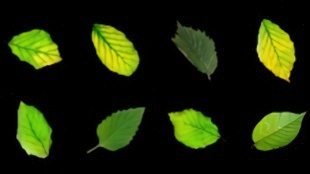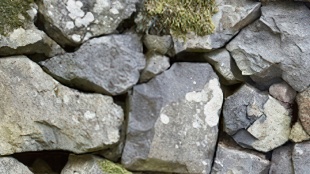您需要 登录 才可以下载或查看,没有账号?注册

x

Introduction
Hi there! My name is Keelan Maclear and I’m 23 years old. I am currently studying Game Art in my 3rd year at Breda University of Applied Sciences (BUAS) in the Netherlands.
I focus mostly on hard surface prop/vehicle art and also love to do environment art.
Before going to BUAS, I studied at the Media College of Amsterdam, where I did an internship at KING Art Games located in Bremen, Germany. This was an amazing learning opportunity and I gained a ton of experience.
During my internship, I got to work on some of the mechs for Iron Harvest, I was responsible for the overall design and in-game models. In the image below, you can an example of a mech I worked on.
介绍
嘿,你好!我的名字是Keelan Maclear,我今年23岁。我目前正在荷兰布雷达应用科学大学(BUAS)学习游戏艺术。
我主要专注于硬表面道具/车辆艺术,也喜欢做环境艺术。
在去BUAS之前,我在阿姆斯特丹媒体学院学习,在那里我在德国不来梅的KING Art Games实习。这是一个了不起的学习机会,我获得了丰富的经验。
在实习期间,我开始为Iron Harvest制作一些机甲,负责整体设计和游戏内模型。在下图中,您可以获得我使用的机甲的示例。

For my personal projects, I love to combine vehicles, environments, and props into one. Taking something that is supposed to be stationary and putting it on wheels is always a super interesting challenge, mechanically and conceptually. For instance, I created a dumpling restaurant on tank tracks.
对于我的个人项目,我喜欢将车辆,环境和道具合二为一。从机械和概念上讲,拿一些应该是静止的东西放在轮子上总是一个超级有趣的挑战。例如,我在坦克轨道上创建了一个饺子餐厅。
Getting Started
Our school organized a Quixel environment challenge, the task was simple: we had to create an environment using only Quixel and ready-made assets so that we could spend our effort on the composition, storytelling, and lighting without having to spend a lot of time on the actual assets. Our only creative constraint was that it had to be a hideout of some kind. This was my first time using UE5, so this was an awesome chance to get familiar with the engine. We were given a week to complete the environment.
开始
我们学校组织了一次Quixel环境挑战赛,任务很简单:我们必须仅使用Quixel和现成的资产创建一个环境,这样我们就可以将精力花在构图,讲故事和照明上,而不必在实际资产上花费大量时间。我们唯一的创意限制是它必须是某种藏身之处。这是我第一次使用UE5,所以这是一个熟悉引擎的绝佳机会。我们得到了一个星期的时间来完成环境。
As always, I started by gathering references and inspiration on the internet. I had been playing God of War a lot, so I was inspired to go in that direction – a large-scale grand scene with an architectural focal point. I really liked the idea of having a giant door embedded into the rockface making it seem like the entrance to a grand kingdom.
Below you can see some of the images that directly inspired the composition.
和往常一样,我从在互联网上收集参考资料和灵感开始。我一直在扮演《战神》,所以我受到启发,朝着这个方向前进——一个带有建筑焦点的大型盛大场景。我真的很喜欢在岩壁上嵌入一扇巨大的门的想法,让它看起来像是一个宏伟王国的入口。
在下面,您可以看到一些直接启发构图的图像。
Credit: Kyle Bromley:
图片来源:Kyle Bromley:
Credit: Luke Berliner:
图片来源:Luke Berliner:
Production
Since we were only allowed to use assets from the Quixel library, I started by thoroughly scanning the library for scans that matched my references and inspiration.
生产
由于我们只被允许使用Quixel库中的资源,因此我首先彻底扫描了库中与我的参考和灵感相匹配的扫描。
For the rocks, I wanted large, rough, detailed cliff faces so that I could blend them together easily to create unique variations.
对于岩石,我想要大而粗糙,详细的悬崖面,以便我可以很容易地将它们混合在一起,以创造独特的变化。
And for the architecture, I wanted something that looked ancient and carved out of rock, so that it would fit nicely into the rock faces.
对于建筑,我想要一些看起来很古老的东西,用岩石雕刻而成,这样它就能很好地融入岩壁。
Once I had my scans selected, I started blending them together with different rotations and scales to create new rock formations and shapes.
一旦我选择了扫描结果,我就开始将它们与不同的旋转和尺度混合在一起,以创建新的岩层和形状。
For the roots coming out of the door, I did the same, I found a nice detailed dead tree branch, duplicated it, and started blending them together in different scales and rotations to rapidly get nice detailed root shapes.
对于从门外出来的根,我做了同样的事情,我找到了一个很好的详细的枯树枝,复制了它,并开始将它们以不同的比例和旋转混合在一起,以快速获得漂亮的详细根部形状。
Once I was happy with the main rocks and roots, I started blending them to the ground using more scans. I selected smaller roots and rocks and blended them together.
一旦我对主要的岩石和根感到满意,我就开始使用更多的扫描将它们混合到地面上。我选择了较小的根和岩石,并将它们混合在一起。
My general approach was: the closer I got to a wide-open space, the smaller the scale of the scans would be. For example, to blend the massive roots with the mossy rocky ground, I used smaller scans of roots mixed with larger rocks to blend the two together.
我的一般方法是:我越接近一个开阔的空间,扫描的规模就越小。例如,为了将巨大的根与苔藓状的岩石地面混合在一起,我使用较小的根部扫描与较大的岩石混合在一起,将两者混合在一起。
When using scans from different packs you sometimes can see major differences in the brightness and the hue of the textures. To fix this and make them blend together nicely, I use the albedo controls in the material of an asset to match each other's values.
当使用来自不同包装的扫描件时,您有时可以看到纹理的亮度和色调的主要差异。为了解决这个问题并使它们很好地融合在一起,我在资源材料中使用反照率控件来匹配彼此的值。
Setting Up the Creatures
The creatures were made by a fellow classmate of mine, David van Dijk. So, for this question, I asked him to give a short summary of his process for the creatures.
设置生物
这些生物是由我的一个同学大卫·范·迪克(David van Dijk)制造的。所以,对于这个问题,我请他简要总结一下他对生物的过程。
Here are his responses:
When creating this creature I started off searching for a concept that looked interesting and challenging. After that, I gather references to all parts of the creature.
以下是他的回答:
在创造这个生物时,我开始寻找一个看起来有趣且具有挑战性的概念。在那之后,我收集了对生物所有部分的参考。
When I had a concept and reference, I could start creating a blockout in ZBrush. I started out with a ZShpere and began sculpting the base body. During this phase, I focused mainly on scale and silhouette not paying too much attention to anatomical accuracy.
当我有了一个概念和参考时,我可以开始在ZBrush中创建一个块。我从ZShpere开始,开始雕刻基础身体。在这个阶段,我主要关注比例和轮廓,而不是太注意解剖学的准确性。
Once I had the rough silhouette, I started working on adding proper anatomy, I did this by building up bone landmarks and muscles covered with layers of fat and tissue.
一旦我有了粗糙的轮廓,我就开始努力添加适当的解剖结构,我通过建立骨骼地标和覆盖着脂肪和组织层的肌肉来做到这一点。
After I was satisfied with the shape, distribution of the muscles, and fat I moved on to detailing. I looked closely at real-world references of skin and scales to make sure that my details had a basis in reality.
在我对形状,肌肉分布和脂肪感到满意之后,我转向细节。我仔细观察了现实世界中皮肤和鳞片的参考,以确保我的细节在现实中有基础。
My most used brushes were mostly the standard ones like ClayBuildup, DamStandard, and the Move brush. I also downloaded a brush that imitates folded skin. Other than that, I used some Alphas of a caiman for the scales.
我最常用的画笔大多是标准的画笔,如ClayBuildup,DamStandard和Move画笔。我还下载了一个模仿折叠皮肤的刷子。除此之外,我还使用了一些凯门鳄的阿尔法星作为音阶。
When the mesh would not change much anymore, I could retopologize in Maya and re-import the mesh into ZBrush. The new clean retopologized mesh would be projected onto the high poly sculpted mesh to retain the shape.
当网格不再有太大变化时,我可以在Maya中重新拓扑,并将网格重新导入ZBrush。新的干净的重新拓扑网格将被投影到高多边形雕刻网格上以保持形状。
The final steps were to import the low poly mesh into Substance 3D Painter and bake the high poly onto the low poly. After that was finished, I textured the model with a lot of different layers.
最后的步骤是将低多边形网格导入Substance 3D Painter,并将高多边形烘焙到低多边形上。完成后,我用许多不同的图层对模型进行了纹理处理。
Stone Gates
The stone gates were actually pretty simple. It was a process of finding a few stone scans that I mixed together.
石门
石门其实很简单。这是一个寻找我混合在一起的几张石头扫描件的过程。
One of the problems I encountered with the gate was that the brightness and color of the textures didn't match. To solve this, I used the albedo control technique which I mentioned before. Lastly, I covered the gates with some grass.
我在门上遇到的一个问题是纹理的亮度和颜色不匹配。为了解决这个问题,我使用了我之前提到的反照率控制技术。最后,我用一些草盖住了大门。
Lighting and Rendering
For the lighting, I first built up the sky and main light source. I used a directional light as the main light source highlighting the scene's focal point and creating the shadows which act as the frame for the shot.
光照和渲染
对于照明,我首先建立了天空和主光源。我使用定向光源作为主光源,突出显示场景的焦点并创建阴影,作为镜头的帧。
Then I added a sky atmosphere and some volumetric clouds, I made sure to enable the clouds to cast a shadow which gives a more realistic look.
然后我添加了一个天空大气层和一些体积云,我确保使云层投射出一个阴影,给人一个更逼真的外观。
I also added an exponential height fog to add more depth and realism to the scene, making sure to enable the volumetric fog. This makes the fog adapt to the directional light in the scene.
我还添加了指数高度雾,为场景增加了更多的深度和真实感,确保启用体积雾。这使得雾气适应场景中的定向光。
To check if there was any part of the scene that needed some more light or contrast, I would often check the values by looking at the scene in black and white.
为了检查场景中是否有任何部分需要更多的光线或对比度,我经常会通过查看黑白场景来检查值。
I useD spotlights and point lights to give more clarity to subjects that looked too dark in the scene. The goal was to emphasize their silhouette and illuminate details where necessary.
我使用D聚光灯和点光源来为场景中看起来太暗的拍摄对象提供更清晰的清晰度。目标是强调他们的轮廓,并在必要时照亮细节。
After setting up the sky and the lights I tweaked the post-processing settings.
设置天空和灯光后,我调整了后期处理设置。
Starting with the color grading I increased the temperature in the white balance to give the sun a more realistic impact on the scene, after that, I increased the saturation and contrast in the global settings and tweaked the film settings to add some more depth to the values of the shot.
从调色开始,我提高了白平衡中的温度,以使太阳对场景产生更逼真的影响,之后,我增加了全局设置中的饱和度和对比度,并调整了胶片设置,以增加镜头值的深度。
Lastly, I enabled the vignette effect to bring the focus to the center of the scene and added some grain jitter.
最后,我启用了晕影效果,将焦点带到场景中心,并添加了一些颗粒抖动。
These are the specific settings for my lights and postprocessing:
这些是我的灯光和后处理的特定设置:
Directional Light source:
定向光源:
Skylight:
天窗:
Colour grading:
颜色分级:
Image effects:
图像效果:
Film settings:
胶片设置:
To create the final render, I captured a high-resolution screenshot, before doing this I always make sure to set the screen percentage to 200% and set all the engine scalability settings to cinematic.
为了创建最终渲染,我捕获了高分辨率屏幕截图,在执行此操作之前,我总是确保将屏幕百分比设置为200%,并将所有引擎可伸缩性设置为电影。
After I finished the post-processing, I put some birds in the sky to give a nice reference to the scale and added the deers which I got from the UE Marketplace.
完成后期处理后,我在天空中放了一些鸟,以很好地参考比例,并添加了我从UE Marketplace获得的鹿。
Lastly, I added cinematic bars in Photoshop and sharpened the image a bit.
最后,我在Photoshop中添加了电影条,并稍微锐化了图像。
Tricks
The main trick when creating environments is that you want to get the most out of the assets.
技巧
创建环境时的主要技巧是您希望充分利用资产。
The biggest piece of advice I can give about working with ready-made assets is to play with their settings. You can make the same asset look completely unique just by changing the scale, the rotation, or the color of the textures. Don't be afraid to reuse assets like crazy!
关于使用现成的资源,我能给出的最大建议是使用它们的设置。只需更改纹理的比例、旋转或颜色,即可使同一资源看起来完全独一无二。不要害怕疯狂地重用资产!
You can get way more depth out of your assets this way. A small branch can become a giant dead tree, a single rock can become a giant detailed cliff face. There are no limits.
通过这种方式,您可以从资产中获得更多的深度。一根小树枝可以变成一棵巨大的枯树,一块岩石可以变成一个巨大的细节悬崖面。没有限制。
Also, don't be afraid to use lots of assets, UE5 Nanite and Lumen enables you to not worry about polycount or light baking when creating environments. Go crazy and add as many details as you want.
此外,不要害怕使用大量资源,UE5 Nanite和Lumen使您在创建环境时不必担心多边形计数或光照烘焙。疯狂地添加尽可能多的细节。
|







 评分
评分







